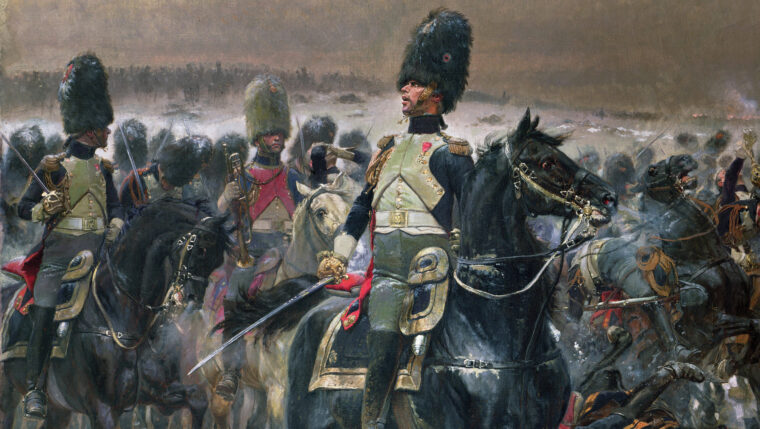
The Fight for Weiler
By Allyn VannoyIN a house in a small, nameless Belgian village, 26-year-old Sergeant Tom Myers, a newly assigned member of the 5th Armored Division, was upstairs changing his filthy uniform for a fresh one. Read more

IN a house in a small, nameless Belgian village, 26-year-old Sergeant Tom Myers, a newly assigned member of the 5th Armored Division, was upstairs changing his filthy uniform for a fresh one. Read more

November 11, 2008, marked the 90th anniversary of the end of World War I. Some 4,734,991 American soldiers served in the conflict, and 116,516 Americans lost their lives during the nation’s two-year participation in the war—a casualty rate far surpassing the deaths incurred in the combined wars of Korea, Vietnam, and the Persian Gulf. Read more

Throughout World War II, the Imperial Japanese Navy dreamed of taking the war to the West Coast of the United States. Read more

Venetian military engineer Gabriel Tandini listened intently in the semi-darkness of the Knights Hospitaller counter-tunnels beneath the walls of Rhodes for sound of Turkish sappers trying to dig under the city’s walls. Read more

By April 1941, just over a year and a half into World War II, Nazi Germany was the master of Europe. Read more

After decisively crushing Austrian and Russian armies in the 1805 campaign, French Emperor Napoleon became the undisputed master of Central Europe. Read more

Once again, the Japanese regarded an upcoming naval engagement as the “decisive battle,” but it had been two years since her aircraft carriers and battleships had emerged from their Inland Sea lairs to menace the United States Navy. Read more

It has long been said that there is a right way to do things, a wrong way to do things—and the military way to do things. Read more

Corporal Michael Kurtz stood on the deck of an attack transport ship sitting off the Normandy coast. Gazing out over the ship’s railing in the pre-dawn hours, he could see the ship’s crew working the davits and ropes for the landing craft. Read more

One of the smoothbore cannons in Captain Merritt B. Miller’s Third Company of the Washington Artillery deployed west of Emmitsburg Road just south of the town of Gettysburg fired a single round at 1:07 p.m. Read more

Second Lieutenant John Bosko was flying his seventh mission on August 24, 1944. He was reasonably seasoned as far as bomber commanders went but was unaware of his target’s macabre reputation. Read more

As Lt. Gen. Matthew Ridgway boarded a flight to Tokyo, Japan, on December 23, 1950, on his way to a meeting with General of the Army Douglas MacArthur, he was not fully aware of the depth of the crisis still unfolding on the frozen Korean peninsula, where American-led United Nations forces and their South Korean allies, who were seemingly on the verge of complete victory in North Korea, were now suddenly on the brink of collapse and perhaps outright defeat. Read more

The hot sun beat down on the mud-brick and wooden buildings, the lush orchards, and the patchwork of pastoral fields around the oval-shaped, walled city of Damascus in southern Syria on the morning of July 24, 1148. Read more

It didn’t look like much—just a speck in the vast ocean. Most travelers spent only a night in the Pan American Hotel and never ventured far from the small adjoining airfield. Read more

In the late summer of 1813, some 550 men, women, and children took refuge within a small wilderness outpost and waited for the worst. Read more

The Wagner Group is Russia’s main Private Military Contractor (PMC), a new term for the age-old concept of mercenary bands. Read more

The Cuban Missile Crisis is the closest humanity has come to nuclear war, despite the fact neither side wanted it to happen. Read more

The years between the end of World War II and the start of the Korean War were relatively quiet years for the United States, but across the Pacific Ocean one of the most significant conflicts in modern history took place, setting the stage for events right up to the present day. Read more

When the Roman Legions marched into the dry desert sands of northern Mesopotamia, the Parthian General Surena was ready for them. Read more

Lieutenant Nick Eslinger’s entry into Iraq was conventional, almost banal. A contracted airliner flew him and other soldiers of the 101st Airborne Division to Kuwait in 2008. Read more